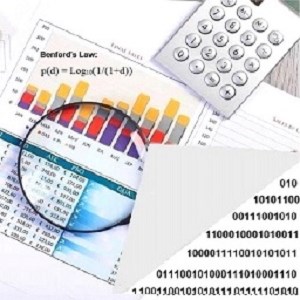描述
To get started with the use of the free Auditmetrics AI software and a copy of the included book, contact us at support@auditmetrics.com.
Review the AI assistance feature with the first exhibit’s 60 second trailer. A more complete demo linking the statistical audit with forecasting and market research can be obtained by selecting:
https://auditmetrics.com/app_data/trailer2.mp4
Auditmetrics AI software is specifically designed for small business to compete in an evolving technology driven business environment that favors analytics. Our economy is on a high-tech commercial revolution where huge business entities marshal vast sophisticated programming to correct past deficiencies and search for potential opportunities. Auditmetrics helps the smaller enterprise survive by providing a level analytical playing field. In the United States, the Small Business Administration establishes small business size standards on an industry-by-industry basis but generally specifies a small business as having fewer than 500 employees for manufacturing businesses and less than $7.5 million in annual receipts for most non-manufacturing businesses. That creates a large range for analytic activity. The free Auditmetrics version6.5 does have file size and feature limitations but is an ideal learning version for small businesses with less than 10 employees. This book/software combination is designed as a complete resource for business analytics and technology. Auditmetrics V6.5 sets the stage for sampling accounts to:
1. Conduct Statistical Audits Assuring Account Data Integrity 2. Convert Statistical Datasets for Forecasting Revenue and Expenses.
Ensuring data integrity is a complex activity that requires coordination from different aspects an organization. Auditmetrics AI integrates the interplay between:
1. People – proper training regarding collection, input, handling, understanding, interpretation, and reporting of results
2. Processes – ensuring input, processing, and output maintain data's reliability, consistency, availability, and accuracy.
3. Technology – Software with AI techniques to maintain the integrity between data and analytics to turn account data into useful information for forecasting and market research
Auditmetrics has recently expanded data input potential by adding an ability to input data from standard reports from many accounting management systems such as QuickBooks. It then can provide a complete analytical framework from auditing cashflow to forecasting revenue and expenses.
All of this is done in a user-friendly environment such that one can traverse the complexity of the statistical audit by using a simple three step process. Each step has a series of computer guided analytic checkpoints. An auditor can let the software establish sample specifications but there is ample opportunity for the auditor to fine tune the final design. Once a design is accepted, a random sample of the account is generated. The AI system also generates Excel templates that can be used to document and record audit results.
GUIDE TO HELP GET STARTED WITH AUDITMERTICS 6.5
https://auditmetrics.com/App_Data/GETTINGSTARTED.PDF
The included book provides support documentation for the business manager when following the process from original statistical sample selection to developing datasets for forecasting using such powerful statistical tools as regression and correlation. There is no need for any additional statistical software. All analytic techniques are available with MS Excel’s Analysis ToolPak, an add-in program that provides data analysis tools for financial and statistical data analysis. It is a feature MS Office Professional
“FORECASTING REVENUE AND EXPENSES, USING STATISTICAL ANALYTICS”: By Eleanor Winslow Education Director
ISBN - 9780578797250 (c) 2020 Auditmetrics
PART I – The Statistical Method
In this section is covered the statistical principles of analyzing empirically derived account data that is the underpinning of economic analysis. The fundamental idea covered is the uncertainty and variation of data used to help explore and understand the dynamics of the business fiscal environment. PART II – Forecasting Revenue and Expenses using Multivariate Techniques
This Section is the discussion of two powerful tools for forecasting future economic activity, linear regression and correlation. The building and interpretation of regression model outputs is accomplished by using MS Excel built-in functions


